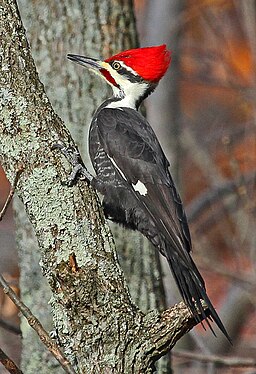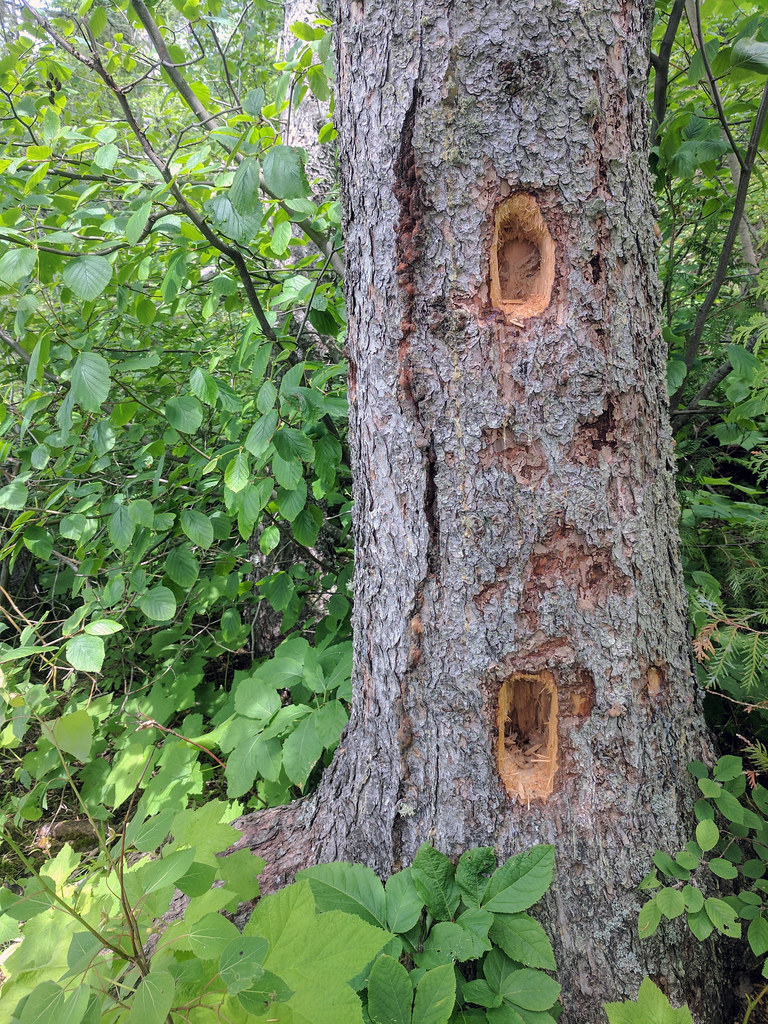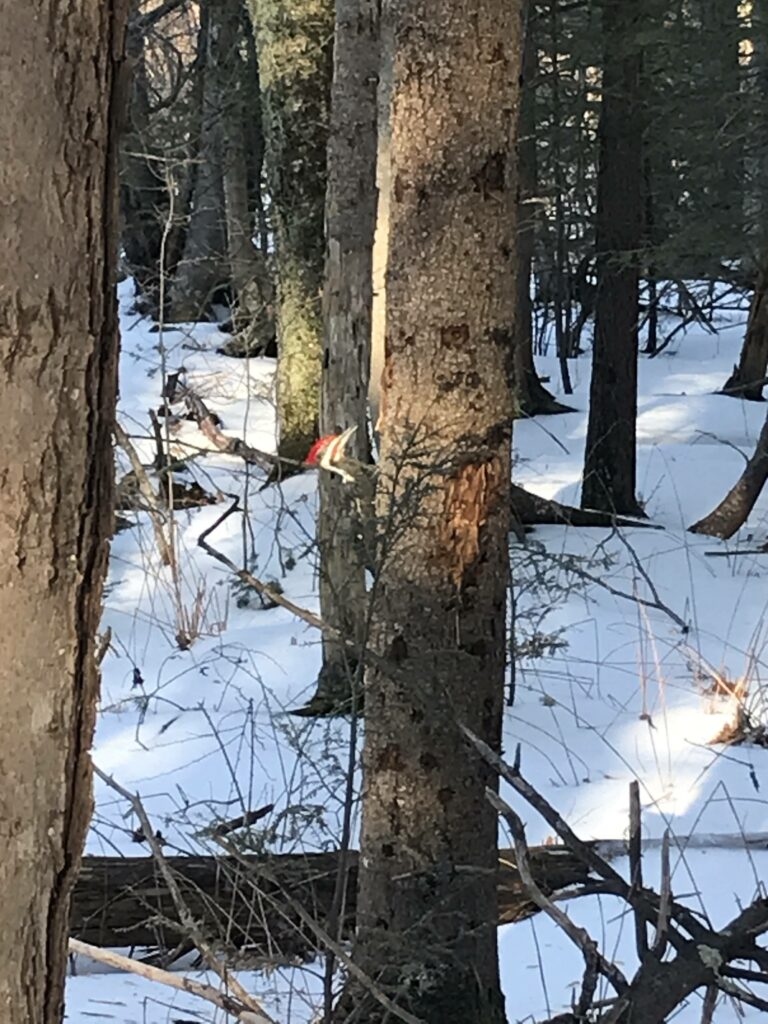While on a walk in Robinson Woods recently, I heard a loud hammering that lasted a few seconds. I was in an area with a few dead trees, or snags, and it only took a minute for me to find the source of the noise.
The pileated woodpecker is North America’s largest species of woodpecker. Besides their size, they’re easily identifiable by their bright red crest on top of their head and sleek black body. If you’re lucky enough to spot one up close, you’ll find that male pileated woodpeckers have a red stripe on their cheeks that females don’t have.

Evidence of pileated woodpeckers can be seen frequently on the CELT trails. They drill large, rectangular holes into dead trees looking for their primary source of food – ants! They have a long, barbed tongue that can reach into the holes to collect insects and their larvae. Pileated woodpeckers will also eat fruits and nuts and can occasionally be seen at birdfeeders and suet.


Winter is a great time to see woodpeckers. Their bright red colors stand out amongst the trees. Keep an ear out as you wander the woods, they’re often heard before they’re seen!
